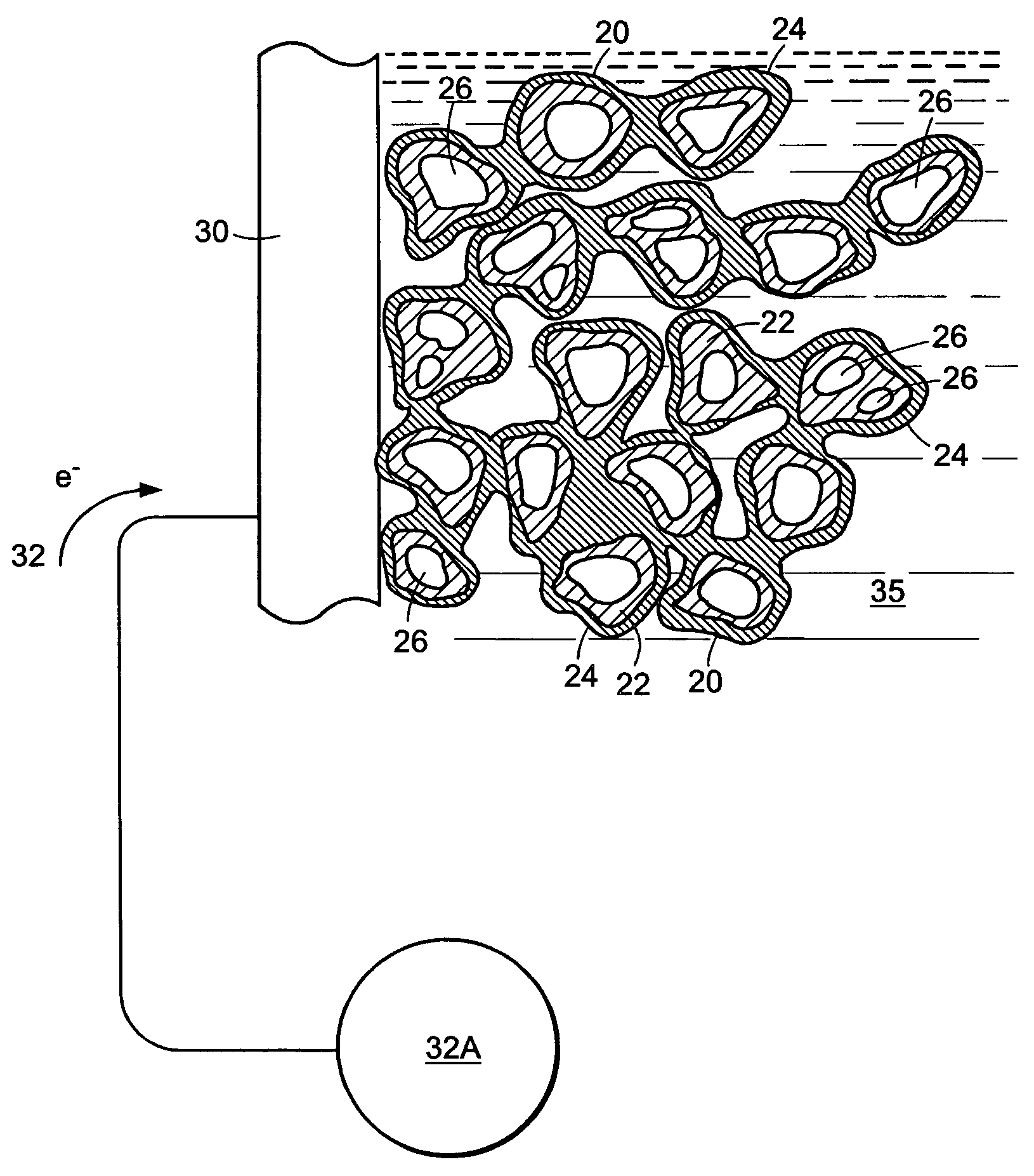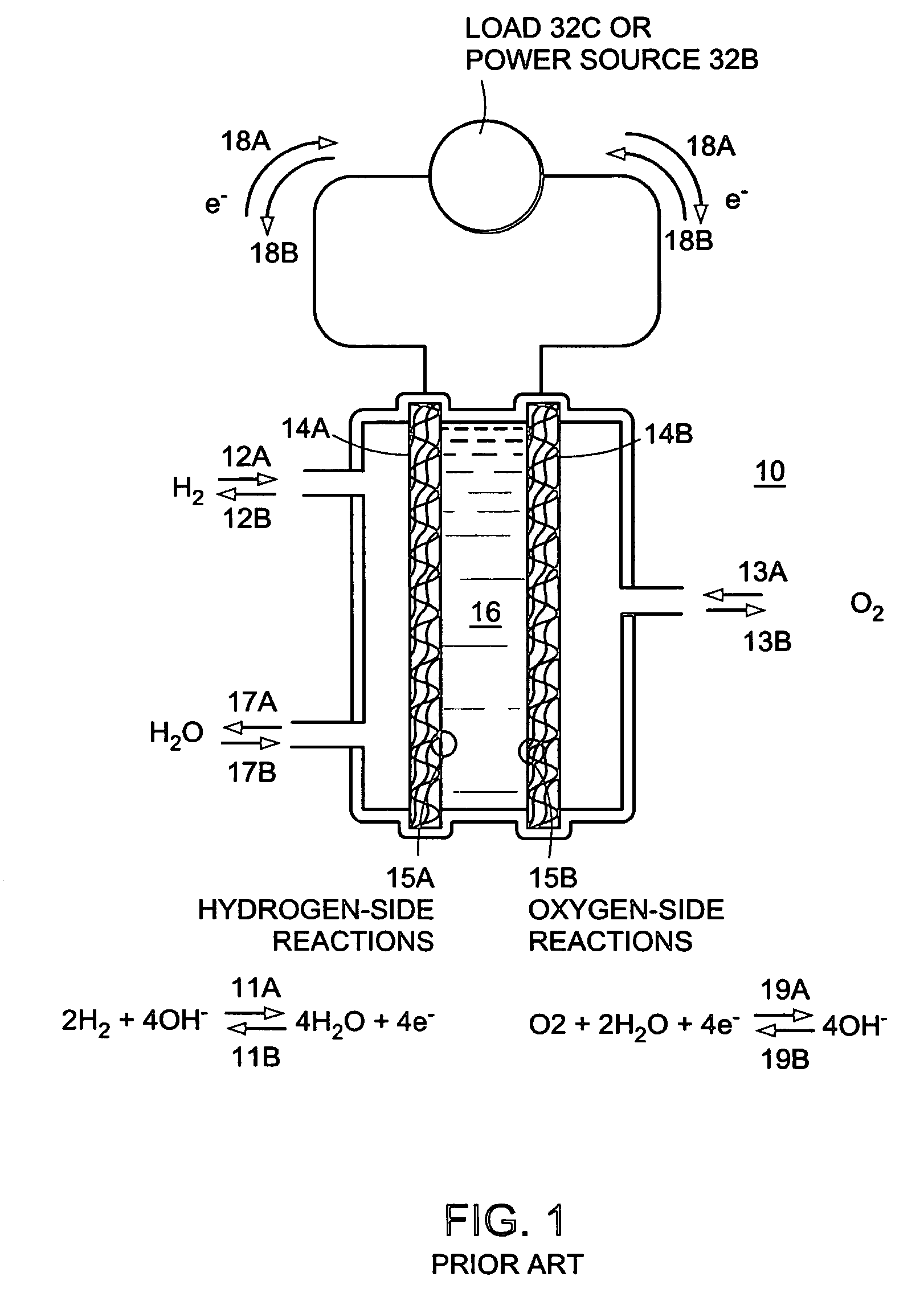Electrochemical generation, storage and reaction of hydrogen and oxygen
a technology of electrochemical generation and storage, applied in the direction of electrolyte moving arrangement, inorganic chemistry, fuel cell and secondary battery technology, etc., can solve the problems of affecting the efficiency of gas storage, so as to facilitate the transfer of gaseous elements and enhance the rate of gaseous transfer
- Summary
- Abstract
- Description
- Claims
- Application Information
AI Technical Summary
Benefits of technology
Problems solved by technology
Method used
Image
Examples
Embodiment Construction
[0074]FIG. 1 illustrates a prior art fuel cell and electrolyser apparatus 10. As shown, hydrogen 12A and oxygen 13A are combined to create water 17A and electricity 18A when the device is operated as a power producing fuel cell. Also shown in FIG. 1 are the fuel cell half-cell reactions 11A and 19A. A simplified form of the equation for the overall reaction is:
2H2+O2→2H2O+electricity
[0075]Hydrogen 12A and oxygen 13A gases are introduced to the device 10 adjacent two porous electrodes, porous anode 14A and porous cathode 14B, respectively. The electrodes, for example, can be made of porous carbon. The gases migrate through their respective porous electrodes (14A and 14B) and meet and react with the electrolyte solution 16 in the three phase reaction zones 15A and 15B of each electrode. Each three phase reaction zone comprises the respective electrode catalyzed to promote a specific half-cell reaction, the respective gas, and the electrolyte. The electrolyte can be, for example, a pot...
PUM
| Property | Measurement | Unit |
|---|---|---|
| size | aaaaa | aaaaa |
| size | aaaaa | aaaaa |
| diameter size | aaaaa | aaaaa |
Abstract
Description
Claims
Application Information
 Login to View More
Login to View More - R&D
- Intellectual Property
- Life Sciences
- Materials
- Tech Scout
- Unparalleled Data Quality
- Higher Quality Content
- 60% Fewer Hallucinations
Browse by: Latest US Patents, China's latest patents, Technical Efficacy Thesaurus, Application Domain, Technology Topic, Popular Technical Reports.
© 2025 PatSnap. All rights reserved.Legal|Privacy policy|Modern Slavery Act Transparency Statement|Sitemap|About US| Contact US: help@patsnap.com



